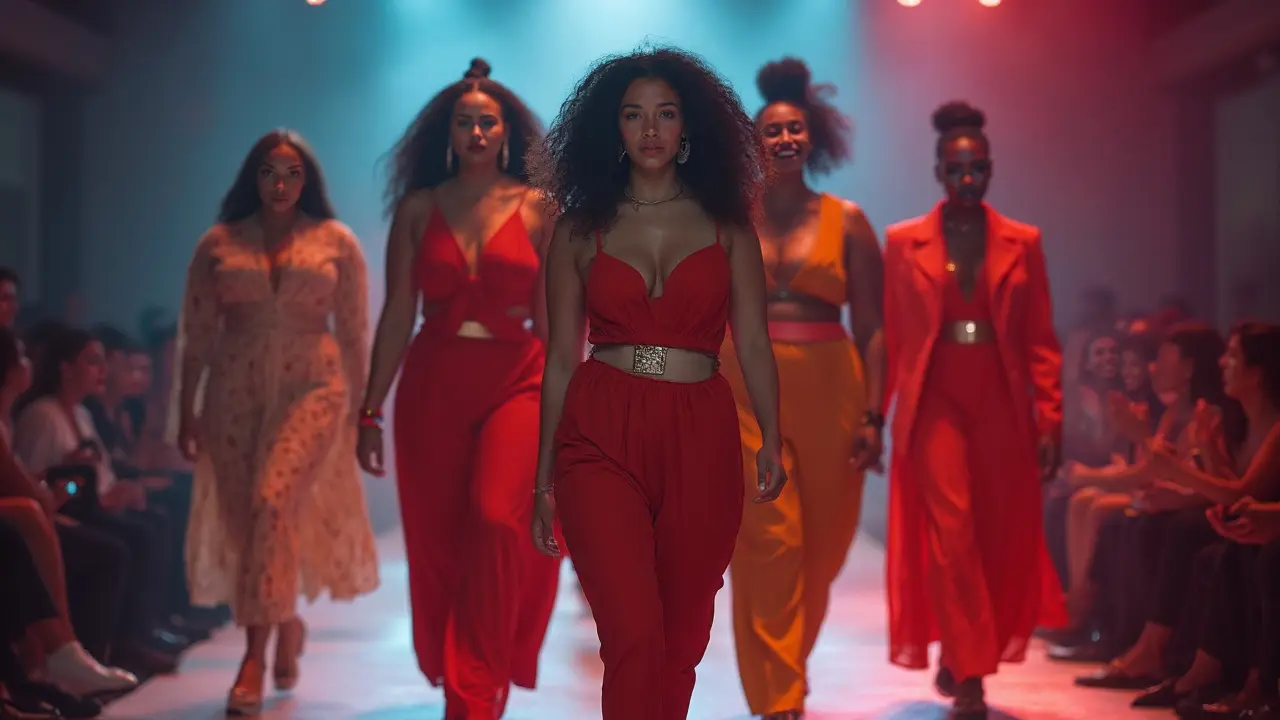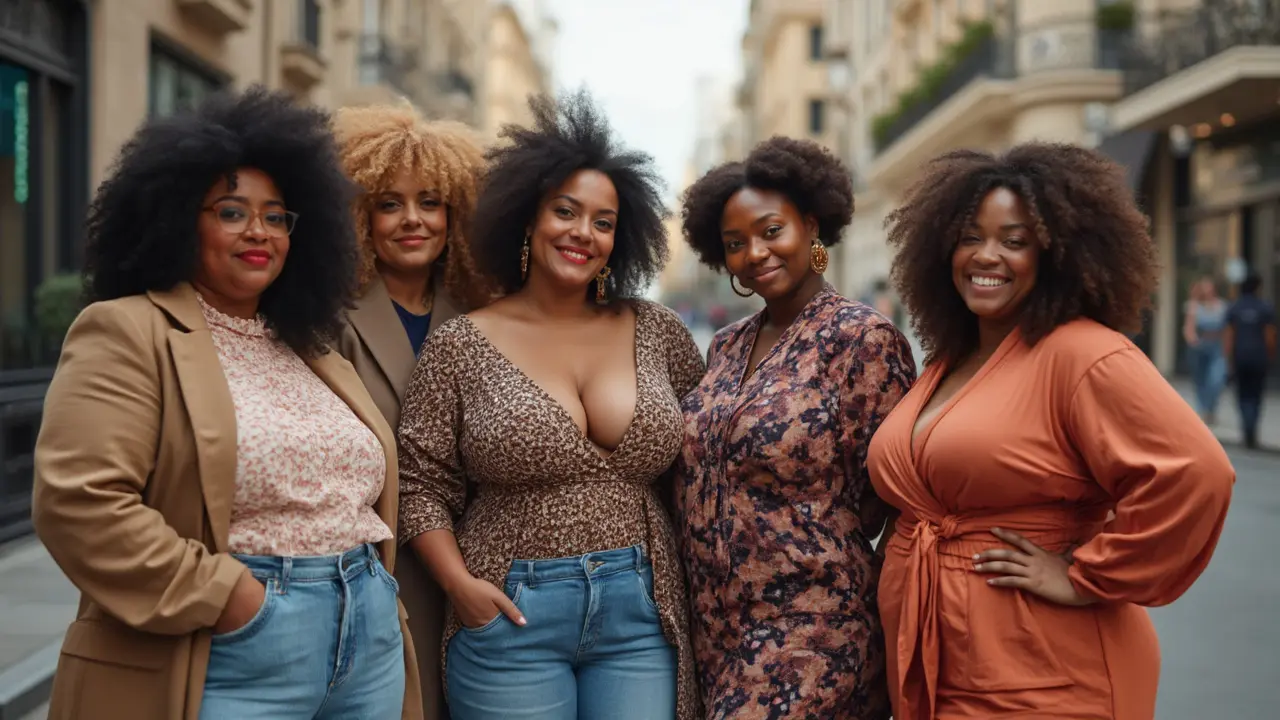
For years, fashion runways pushed one look—thin and straight. But that’s old news now. Curvy models are storming runways, magazine covers, and ad campaigns, showing that real bodies belong everywhere style happens. Google searches for "curvy fashion" have more than doubled in the last five years. People are hungry for realistic representation, and brands notice.
If you’ve ever felt like your size or shape doesn’t fit the classic "model" box, you’re definitely not alone. Today’s modeling agencies are signing women with curves, unique proportions, and real personalities. The demand isn’t just coming from brands, but from customers who want to see clothes on bodies they actually recognize in the mirror.
- The Rise of Curvy Models
- Breaking Stereotypes in Fashion
- Practical Style Tips for Every Curve
- Building Self-Confidence in Modeling
The Rise of Curvy Models
The world of modeling used to be brutally exclusive. For decades, only one body type seemed to get attention. Then something started shifting. In 2016, Ashley Graham made history as the first curvy woman to land the cover of Sports Illustrated’s Swimsuit Issue. Suddenly, the doors were cracking open.
It wasn’t just a one-off moment. Plus-size models like Paloma Elsesser, Tess Holliday, and Precious Lee began to get big-name contracts. These women didn’t just show up on social media—it was billboards, runways, and the pages of Vogue. The old idea of beauty standards was finally being questioned for good reason.
Brands are responding because consumers are fed up with unrealistic images. In 2020, fashion search engine Lyst reported that searches for plus-size pieces were up by more than 200%. That’s not some tiny trend. Major stores like Target and Nordstrom rolled out extended sizing, and famous designers like Christian Siriano added curvy models to their main shows.
Instagram also played a huge part. Regular people could see—and relate to—models with natural shapes. The "body positivity" movement didn’t stop at hashtags. Curvy influencers built huge followings, sometimes even bigger than traditional models. Their message? Representation matters, and you don’t need to shrink to fit in.
If you want to break into modeling as a curvy talent, you have more openings than ever. Agencies like IMG, Wilhelmina, and Ford actively scout for models of all sizes and body types now. Just check their websites—there are dedicated divisions for curvy and plus-size talent. The most important thing is to bring your own confidence, not someone else’s idea of beauty.
- Look up agencies with legit plus-size boards.
- Follow curvy models on Instagram to learn how they pose and present themselves.
- Let your style show—brands want to see personality, not just measurements.
The curvy models movement isn’t a fad—it’s how the industry finally catches up with reality.
Breaking Stereotypes in Fashion
Fashion used to have just one look—skinny models and cookie-cutter sizes. But things are way different now. Almost every big brand, from Savage X Fenty to ASOS, has introduced curvy models into their campaigns. Rihanna even made headlines when her Fenty show used more plus-size models than traditional ones. This isn’t just about being trendy—it's about real people seeing themselves represented.
The reality? The average dress size in the United States is now between 16 and 18. For years, fashion magazines showed mostly size 0 or size 2 models. That wasn’t just misleading; it was discouraging for millions of women. Things started to shift in the early 2010s, and now #bodypositivity trends on TikTok and Instagram keep the movement growing.
| Year | Percent of Fashion Campaigns with Curvy Models |
|---|---|
| 2010 | 2% |
| 2015 | 11% |
| 2024 | 28% |
That 28% number in 2024 might sound small, but in an industry that moves this slow, it’s huge. It took real people—models like Ashley Graham and Paloma Elsesser—speaking out about discrimination and fighting for basic respect on set. Brands got the message. Clothing lines started adding extra sizes and showing women with different body shapes wearing their products.
If you want to break into the industry as a curvy model, here’s the truth: agencies are now looking for all sorts of looks and personalities. You don’t have to starve yourself or hide your curves. Confidence, glowing skin, good posture, and a real smile? That’s what gets attention now. And for anyone just looking to feel good in their own skin, these changes make it easier to see that there’s no "wrong" way to look stylish.

Practical Style Tips for Every Curve
Shopping as a curvy woman can sometimes feel like trial and error, but there are ways to sidestep the stress and focus on what actually works for your body. First off, know that fit trumps size every time. Don’t obsess over the number on the label. Lots of people wear different sizes depending on the brand, so use the size as a guide, not a rule.
Fabrics matter too. Look for materials with a bit of stretch—think cotton blends, jersey, or ponte. They hug curves without feeling stiff or uncomfortable. Steer clear of anything too clingy or too loose. Clothes that skim, not squeeze, highlight your shape in the best way.
- Wrap dresses and V-neck tops are classics for curvy bodies—they frame the chest and define the waist, making everything look balanced.
- High-waisted jeans and skirts give the illusion of longer legs and support your core.
- Dark washes and solid colors are slimming, but don’t shy away from prints. Pick vertical stripes or small patterns for a flattering effect.
- Layer smartly—open blazers, structured jackets, and even long cardigans create clean lines that lengthen your overall look.
Undergarments make a difference. Well-fitted bras and high-rise briefs can totally change how clothes sit on your figure. Some stylists even say that getting a bra fitting is the single best thing you can do to improve your wardrobe game.
If you want to break into the curvy models scene, start snapping photos of yourself in different outfits and styles, so you can see what flatters you on camera (not just in the mirror). Don’t shy away from bold accessories either; they can shift focus and make a simple outfit pop.
Building Self-Confidence in Modeling
No one walks onto a photoshoot set feeling 100% confident from day one. That’s just the honest truth. Even the most successful curvy models have had rough days where self-doubt creeps in or someone says something critical. The trick is learning how to shut out that noise and trust the process. Usually, confidence comes from actually doing the work, putting yourself out there, and seeing proof that you belong.
The numbers back this up. A 2023 survey from Model Alliance found that over 70% of plus-size models said their self-esteem shot up after landing their first few jobs. Getting out there makes a difference. If you’re new, start by practicing at home – pose in front of a mirror, figure out your best angles, and get used to seeing yourself as the world does.
- Stay off the comparison train. The models you follow on Instagram? Remember, they’re also using filters and pro photographers.
- Follow a few curvy influencers who regularly share unedited photos. This keeps your feed relatable and realistic.
- Get feedback from people you trust instead of chasing random online validation.
- Read up on agency requirements for curvy models—many now want personality and movement in photos, not just static poses.
One way to remind yourself you’re making progress is to track your growth. Whether it’s new poses you’ve nailed or jobs you’ve booked, keeping a record can make a huge difference. Confidence is a muscle—the more you flex it, the stronger it gets.
| Confidence Builder | Impact According to Models |
|---|---|
| Landing paid modeling jobs | 82% say this boosted their self-esteem the most |
| Practicing posing/photography at home | 67% felt more comfortable in front of cameras afterward |
| Joining body-positive online groups | 58% reported feeling less alone and more accepted |
| Receiving authentic feedback from mentors | 61% felt more prepared and less anxious at castings |
Surround yourself with support, keep things real, and never underestimate the power of seeing yourself through your own lens first. The confidence that powers your modeling career is something you build over time—one shoot, one photo, one self-affirming moment at a time.



